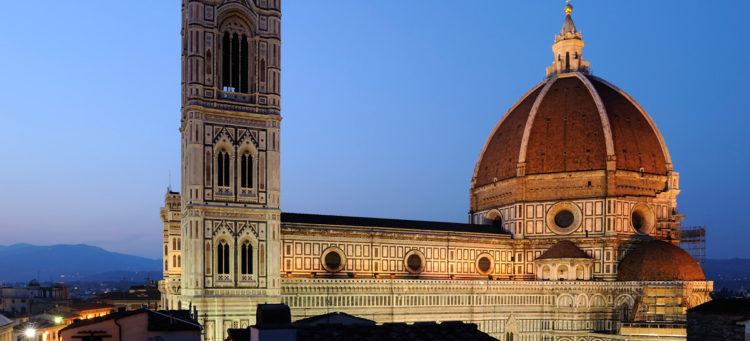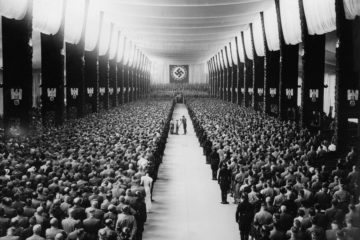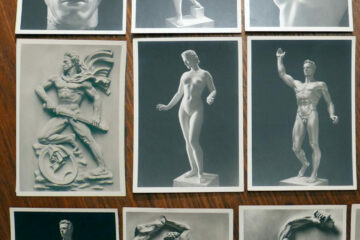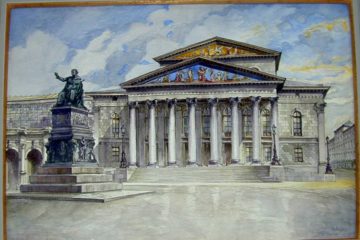White History: Filippo Brunelleschi and the Rediscovery of Perspective
Florentine artist made truly realistic art possible again, after centuries of Christian decay and neglect
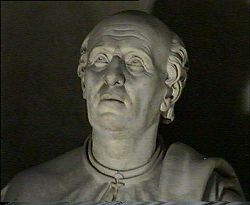
FILIPPO BRUNELLESCHI is probably not among the names most people associate with the Renaissance, but he should be. He was a true genius and one of the greatest minds around Florence in a time when there were many geniuses. Without his contributions, the Renaissance would have been very different. Brunelleschi (pronounced Bru-nel-less-ski) lived from 1387-1446. He was trained as a goldsmith and entered the famous competition with Lorenzo Ghiberti to create the doors on the Florence baptistry (read that story here). Ghiberti won the commission, possibly because Brunelleschi refused to share the commission. Either way, Brunelleschi went on to change the course of the artistic renaissance in Florence in not one but two enormous ways. Later, he would successfully design and oversee the completion of the enormous red dome on the Florence Cathedral, a structural achievement that was way ahead of its time and changed the course of architecture. It could be argued that his greatest achievement was his discovery, or re-discovery, of linear perspective.
 Among the cultures of the ancient world, only the Greeks and the Romans had spacial depth in art figured out. That is to say, they understood how to create an image with convincing depth and a painted or sculpted illusion of 3 dimensional space. We know this because we can see it today in works like the Column of Trajan, or the painted villas of Pompeii. During the middle ages, these artistic sensibilities were lost. More accurately, the entire world point of view changed in the middle ages to reflect the church. No longer were artists interested in pursuing perfect depictions of the human body or of the world around them. After 1000 years, artists in Florence were aware that they didn’t know how to create convincing depth in a painting, and they were working hard to develop a system of perspective. You can clearly see this in the work of late medieval and early Renaissance painters. Their pictures have a flat look to them. Just look at this image of Christ being led to his crucifixion. The city in the background appears very small because the figures far off in the distance are the same size as those in the foreground. Also, the parallel lines of the walls do not recede into the distance. It’s an image and a perfect example of the problem facing painters around 1400. How do you make a picture realistic? It seems so simple to us now, but it was a huge problem that took centuries to solve until Filippo Brunelleschi figured it out.
Among the cultures of the ancient world, only the Greeks and the Romans had spacial depth in art figured out. That is to say, they understood how to create an image with convincing depth and a painted or sculpted illusion of 3 dimensional space. We know this because we can see it today in works like the Column of Trajan, or the painted villas of Pompeii. During the middle ages, these artistic sensibilities were lost. More accurately, the entire world point of view changed in the middle ages to reflect the church. No longer were artists interested in pursuing perfect depictions of the human body or of the world around them. After 1000 years, artists in Florence were aware that they didn’t know how to create convincing depth in a painting, and they were working hard to develop a system of perspective. You can clearly see this in the work of late medieval and early Renaissance painters. Their pictures have a flat look to them. Just look at this image of Christ being led to his crucifixion. The city in the background appears very small because the figures far off in the distance are the same size as those in the foreground. Also, the parallel lines of the walls do not recede into the distance. It’s an image and a perfect example of the problem facing painters around 1400. How do you make a picture realistic? It seems so simple to us now, but it was a huge problem that took centuries to solve until Filippo Brunelleschi figured it out.
 Brunelleschi observed that with a fixed single point of view, parallel lines appear to converge at a single point in the distance. Brunelleschi applied a single vanishing point to a canvas, and discovered a method for calculating depth. In a famous noted experiment, Brunelleschi used mirrors to sketch the Florence baptistry in perfect perspective. He was able to mathematically calculate the scale of objects within a painting in order to make them appear realistic. It was a monumental discovery, and soon artists were using Brunelleschi’s method of perspective to astonishing effects in their paintings. Brunelleschi’s original perspective studies are long gone, but he directly influenced many others. The first known painting to show true linear perspective is Masaccio’s “The Holy Trinity”. In the fresco, a false room has been created on the flat wall of the church using perspective to simulate the architecture.
Brunelleschi observed that with a fixed single point of view, parallel lines appear to converge at a single point in the distance. Brunelleschi applied a single vanishing point to a canvas, and discovered a method for calculating depth. In a famous noted experiment, Brunelleschi used mirrors to sketch the Florence baptistry in perfect perspective. He was able to mathematically calculate the scale of objects within a painting in order to make them appear realistic. It was a monumental discovery, and soon artists were using Brunelleschi’s method of perspective to astonishing effects in their paintings. Brunelleschi’s original perspective studies are long gone, but he directly influenced many others. The first known painting to show true linear perspective is Masaccio’s “The Holy Trinity”. In the fresco, a false room has been created on the flat wall of the church using perspective to simulate the architecture.
Here’s one of the best video clips on perspective from James Burke. It’s a little outdated, but the content and explanation of Brunelleschi’s discovery is great. Enjoy!
* * *
Source: maItaly


